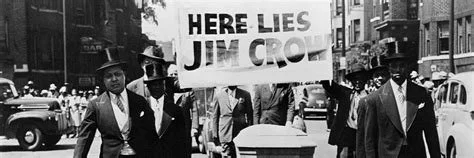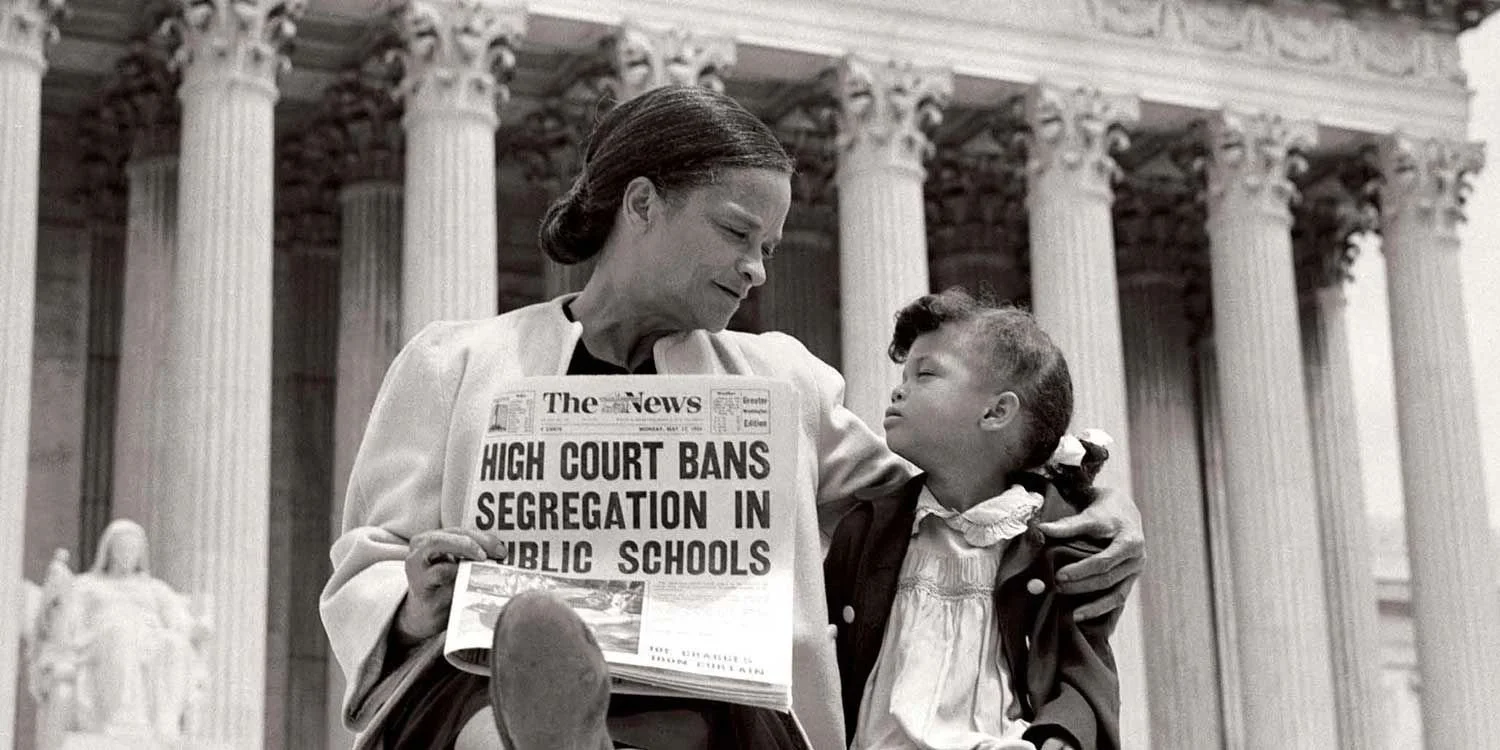THE MAN WHO BROKE JIM CROW
BALTIMORE, 1930 — The letter is blunt. Though the young man graduated with honors from America’s oldest black college, he cannot attend his preferred law school. “The University of Maryland does not admit Negro students and your application is accordingly rejected."
Fast forward five years. Working for the NAACP, Thurgood Marshall takes his first case. His client has been refused entry to the school that still “does not admit Negro students.” Later, Marshall will say he took the case “to get even with the bastards,” but in court he is more eloquent.
“What's at stake here is more than the rights of my client. It's the moral commitment stated in our country's creed.” The suit is won, appealed, upheld. Maryland must integrate its law school.
“We shall be a nation of laws, not of men,” John Adams wrote. Yet it took men like Thurgood Marshall to make the adage ring true.
Born in 1908, a year when 89 blacks were lynched, Marshall grew up in a poor Baltimore neighborhood. Christened Thoroughgood, he shortened his name because he “got tired of spelling all that out.” Marshall’s mother taught elementary school. His father, a railroad porter, taught his son to love the law.
“He never told me to become a lawyer, but he turned me into one,” Marshall recalled. “He taught me how to argue, challenged my logic on every point, by making me prove every statement I made, even if we were discussing the weather.”
In 1930, Marshall went to Howard Law School, commuting to DC because he could not afford room and board. He graduated top of his class and hung out a shingle. But he did mostly pro bono work until he joined the NAACP.
Case by case, NAACP lawyers were chipping away at Jim Crow. Marshall soon took the struggle to the front lines, traveling 50,000 miles a year through the Deep South, taking cases no local lawyer would touch. Black defendants facing all-white juries. Jim Crow at its worst. "I was on the verge of a nervous breakdown for a long time, but I never quite made the grade.”
He won equal pay for some clients but saw others condemned to death. And with time, he crafted a new strategy.
Using “separate but equal,” NAACP lawyers had argued for improving black schools, making them “equal.” Marshall argued that separate could never be equal, and that Jim Crow denied black citizens “equal protection under the law.”
In Smith v. Allwright (1944), Marshall convinced the Supreme Court to ban the South’s all-white primaries. In Morgan v. Virginia (1946), the court overturned segregation of interstate buses. In Shelley v. Kraemer (1948) the court struck down racial housing covenants. Marshall’s arguments also integrated law schools in Texas, Oklahoma, and Missouri.
But what about public schools?
In 1950, the NAACP lumped five school segregation cases into one landmark effort. Again before the Supreme Court, Marshall argued that “separate” was never “equal.” Then he took a new tact, using psychologists to testify that segregated schools stigmatized young children.
Segregation, Marshall told the court, “is an inherent determination that the people who were formerly in slavery, regardless of anything else, shall be kept as near that stage as possible. And now is the time, we submit, that this court should make clear that that is not what our Constitution stands for.”
By a unanimous vote, Brown v. Board of Education ordered public school integration. “I was so happy I was numb,” Marshall recalled.
“To do what he did required a heroic imaginaton,” one of Marshall’s law clerks wrote. Despite growing up under Jim Crow, “Thurgood Marshall had the capacity to imagine a radically different world, the imaginative capacity to believe that such a world was possible, the strength to sustain that image in the mind’s eye and the heart’s longing, and the courage and ability to make that imagined world real.”
In 1967, Marshall became the first black Supreme Court justice. He had argued 32 cases before the court. He won 29. Now he would be on the bench.
At first, he wrote eloquent majority opinions. "If the First Amendment means anything, it means that a State has no business telling a man, sitting alone in his own house, what books he may read or what films he may watch.”
But as the court moved to the right, Marshall became “the great dissenter.”
On the death penalty: “a vestigial savagery. . . [that] falls upon the poor, the ignorant, and the underprivileged members of society."
On using local property taxes to fund schools: “. . . the majority's holding can only be seen as a retreat from our historic commitment to equality of educational opportunity. . .”
On affirmative action: “I do not believe that this Nation is anywhere close to eradicating racial discrimination or its vestiges. . .”
On into his 70s, Marshall refused retirement. “I was appointed to a life term and I intend to serve it.” By health problems did what Jim Crow law could not. Marshall stepped down in June, 1991. He was replaced by Clarence Thomas. Draw your own conclusions.
When he died two years later, thousands filed past his coffin beneath the Capitol dome. Tributes poured in. "With his departure goes part of the conscience of the Court." “Probably the most important American lawyer of the twentieth century.”
Today, Marshall’s name graces city streets and courthouses, yet his faith in the Constitution as a “living document” also enshrines him. "Today, ‘We the People’ no longer enslave, but the credit does not belong to the framers. It belongs to those who refused to acquiesce in outdated notions of ‘liberty,’ ‘justice,’ and ‘equality,’ and who strived to better them.”












